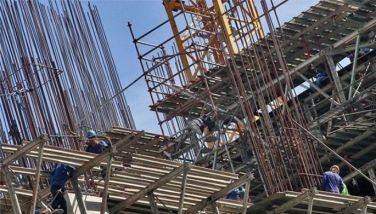The Filipinos and the pope
Over the past week, local and international media have actively covered reports regarding the Pope’s declining health. Due to his advanced age and multiple illnesses, Pope Francis has been in and out of the hospital for years. Around the world, Catholics have responded with prayer rallies and vigils, which have intensified in recent days. In the Philippines, concerns about the Pontiff’s health are widely felt, though some politicians have used the situation to further their own interests. While a significant number of Filipinos are no longer devout or practicing Catholics, the country still has the highest number of Catholics by religious affiliation.
During World War II, President José P. Laurel maintained secret communications with the Vatican concerning the welfare of Catholics in the country. This act reflected the deep-rooted connection between the Philippines and the Holy See, which would manifest in later years through various national expressions of mourning for deceased popes.
Historical records and newspaper archives demonstrate how Filipinos have shown their love and admiration for the Pope. One notable instance was the passing of Pope John XXIII in 1963. In response, President Diosdado Macapagal declared June 4–12, 1963, as a national period of mourning through Proclamation No. 116. The proclamation honored the Pope’s contributions to world peace, humanitarian efforts, and his advocacy for universal brotherhood. As a sign of respect, flags in government buildings, installations, embassies, and consular offices were flown at half-mast throughout the mourning period.
Fifteen years later, in August 1978, the Philippines once again grieved for a departed pope. Following the passing of Pope Paul VI, President Ferdinand E. Marcos issued Proclamation No. 1765-A on August 10, 1978, declaring August 10–17, 1978, as a national period of mourning. As with previous occasions, all government buildings and installations were instructed to fly the national flag at half-mast, reflecting the collective sorrow of the Filipino people. Pope Paul VI held a special place in the hearts of many Filipinos, particularly for his historic visit to the country in 1970, marking the first time a reigning pope set foot on Philippine soil. This visit left an indelible mark on the predominantly Catholic nation, strengthening the spiritual and diplomatic bond between the Holy See and the Philippines. The Pope’s commitment to peace, social justice, and his engagement with the modern world deeply resonated with Filipino Catholics.
More recently, in April 2005, the Philippines mourned the passing of Pope John Paul II, reflecting the nation’s deep love and respect for the beloved pontiff. In response, President Gloria Macapagal-Arroyo issued Proclamation No. 822 on April 4, 2005, declaring a national period of mourning until the Pope’s interment. As a sign of grief, all government buildings and installations were ordered to fly the national flag at half-mast. Pope John Paul II was particularly cherished by Filipinos. His strong advocacy for peace, social justice, and engagement with contemporary global issues resonated deeply with the Filipino faithful. The national mourning period in 2005 was yet another reflection of the Filipino people's love and admiration for the pontiff, reinforcing their enduring faith and devotion to the papacy.
Finally, with the most recent passing of a pontiff, Filipino Catholics joined the world in mourning Pope Benedict XVI, who died on December 31 at the age of 95. The CBCP highlighted Pope Benedict XVI as the "Pope of Charity."
These moments of national mourning throughout Philippine history reveal the deep and enduring spiritual connection between Filipinos and the Vatican. Despite shifts in religious practice, the Filipino people's reverence for the papacy remains steadfast, highlighting their unwavering faith and devotion to the Church.
I remember in 1995 when Pope John Paul II visited the Philippines for the World Youth Day. I was galvanized just like millions of other Filipinos, and there was an extremely profound sense of connection to the divinity, even if one was far from the actual event in Manila. Filipinos have always held the pope closely in their hearts, and while we pray for this pontiff’s recovery, we know the time is near.
- Latest
























